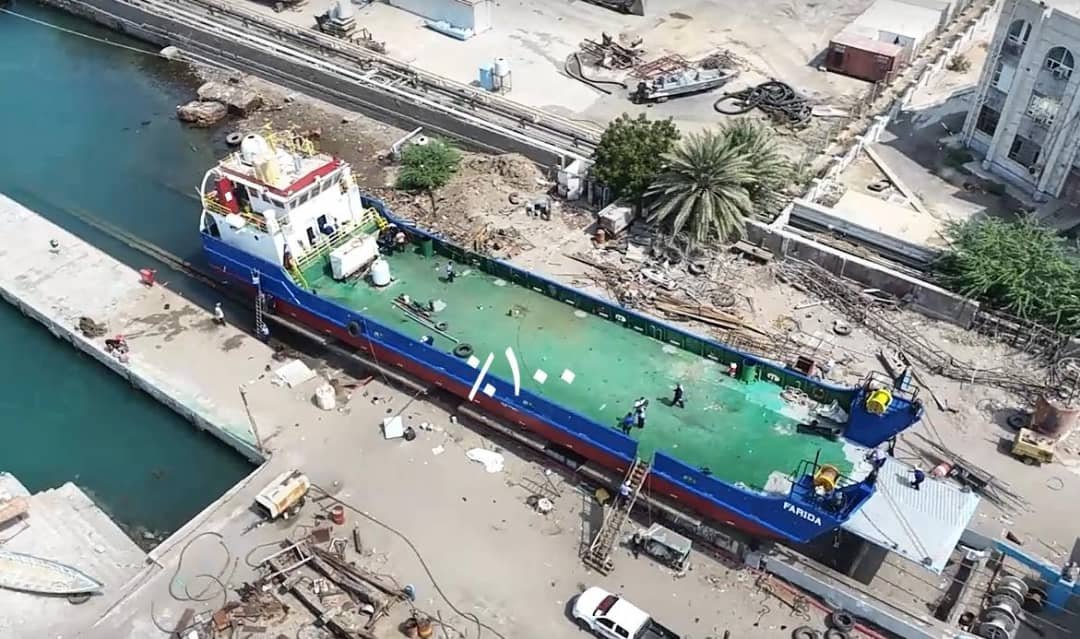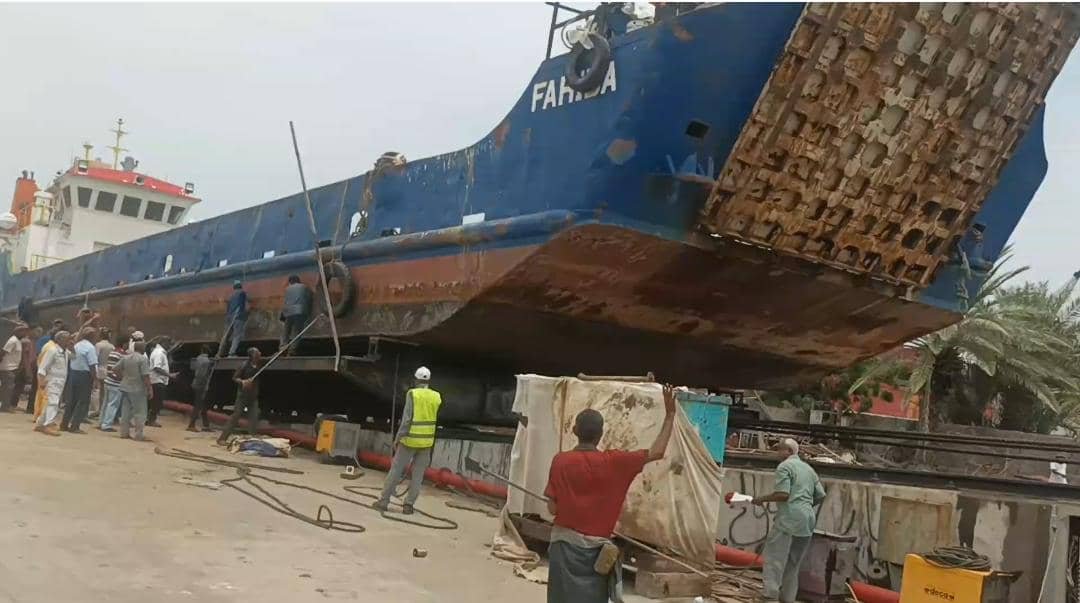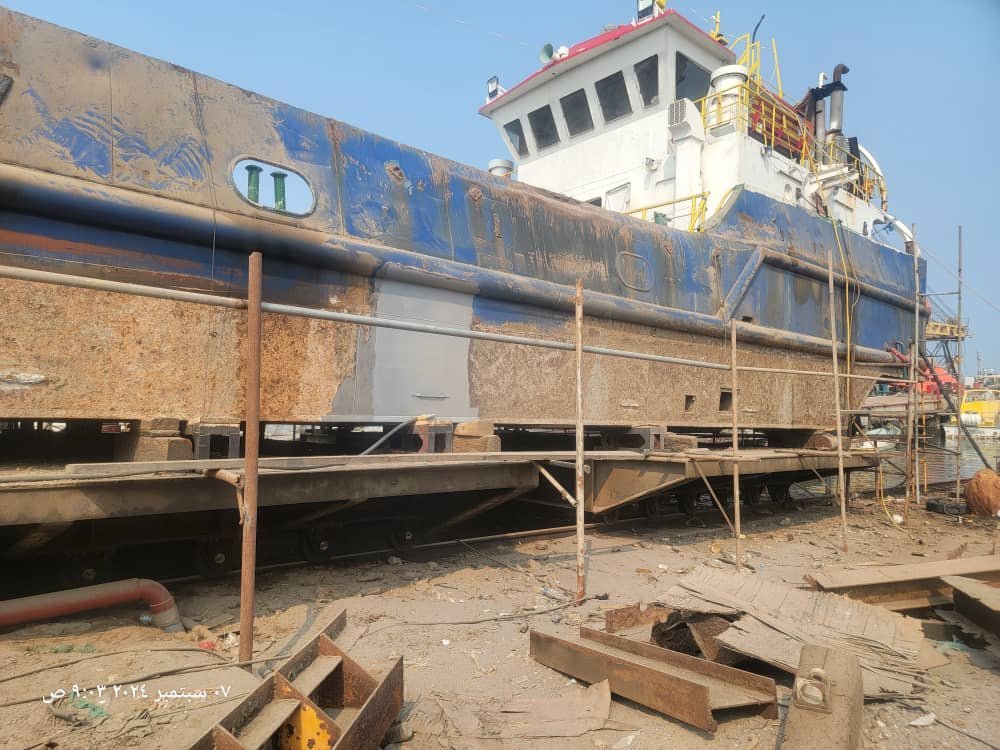Shopping cart
No Widget Added
Please add some widget in Offcanvs Sidebar
Please add some widget in Offcanvs Sidebar

The landing craft “FARIDA” ran aground in shallow waters within the harbor due to sudden, strong winds. The incident resulted in damage to the propulsion and steering systems for both sides of the vessel, in addition to damage to the stern part of the ship’s hull structure.
In September 2024, the Landing Craft “FARIDA” docked on the slipway of the Yemen Red Sea Ports Corporation, with the assistance of the slipway team, we performed a scheduled, in-depth inspection of the propulsion and steering system and stern hull structure.
The project involved the removal of the propeller, propeller shaft and rudder for both ship sides—followed by their repair and complete overhaul. Once restored to optimal condition, the components were reinstalled, ensuring that the vessel met all international standards for performance and safety. Cutting and welding works were carried out to the stern hull; all damaged plates, girders and stiffeners were replaced by new.
All dock work carried out (Hull cleaning, shot blasting, hull painting, cathodic protection replacing, maintaining of: anchor system with anchor chain, sea chest boxes with valves, keel coolers and mooring fenders system).


Refurbishing “FARIDA” was an intricate task; the project was complicated by the necessity to adhere to a strict overhaul schedule that minimized downtime, as any delay would disrupt commercial operations. Unforeseen issues like severe corrosion and outdated internal systems emerged during the refurbishment, demanding additional remedial measures to ensure the vessel’s long-term performance and reliability.
Coordinating multiple repair teams in a strict overhaul schedule was complex.